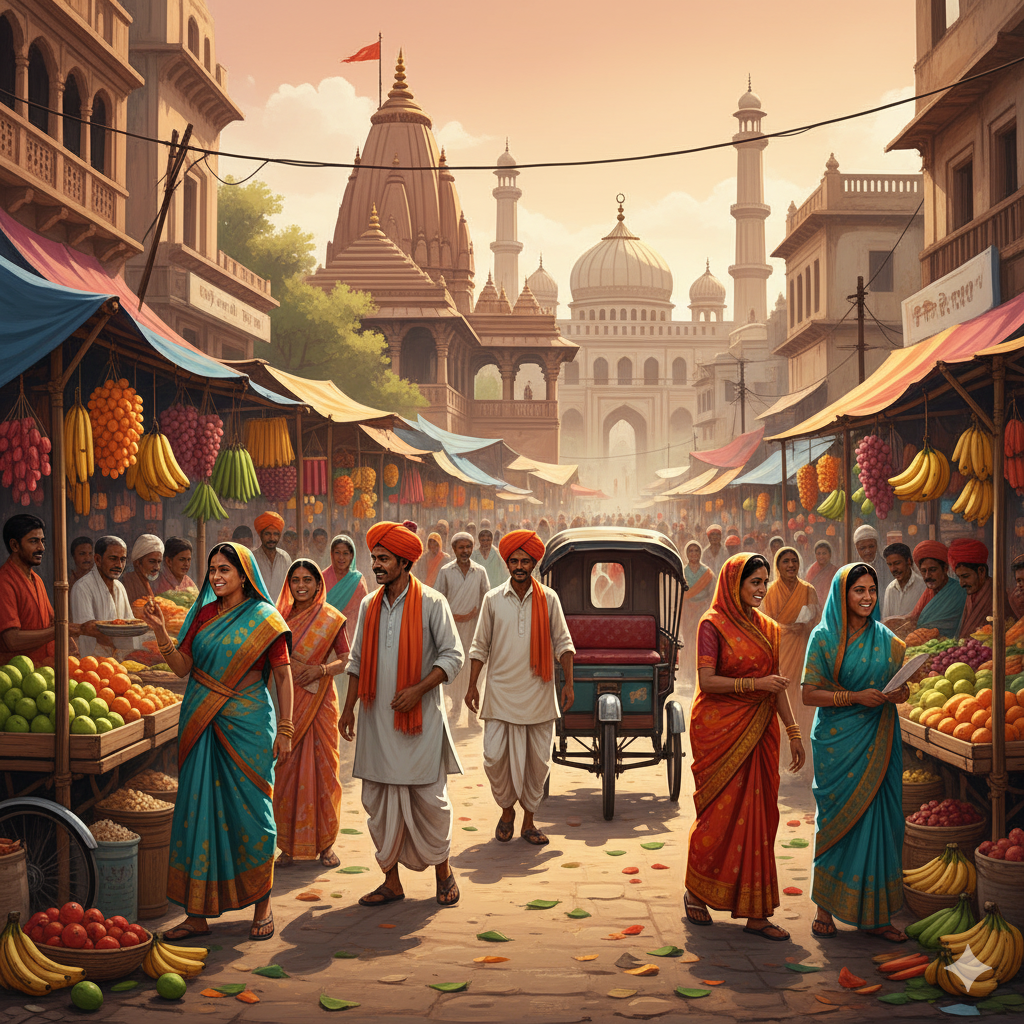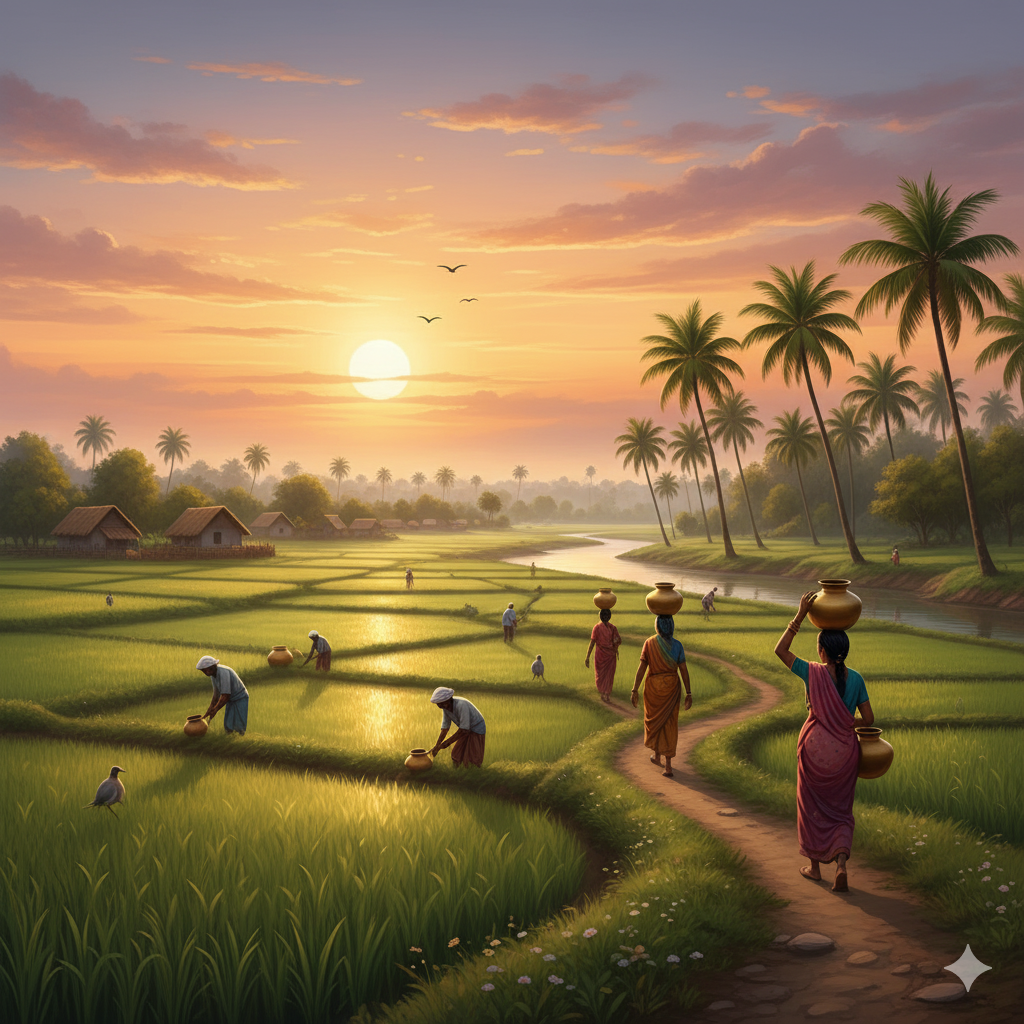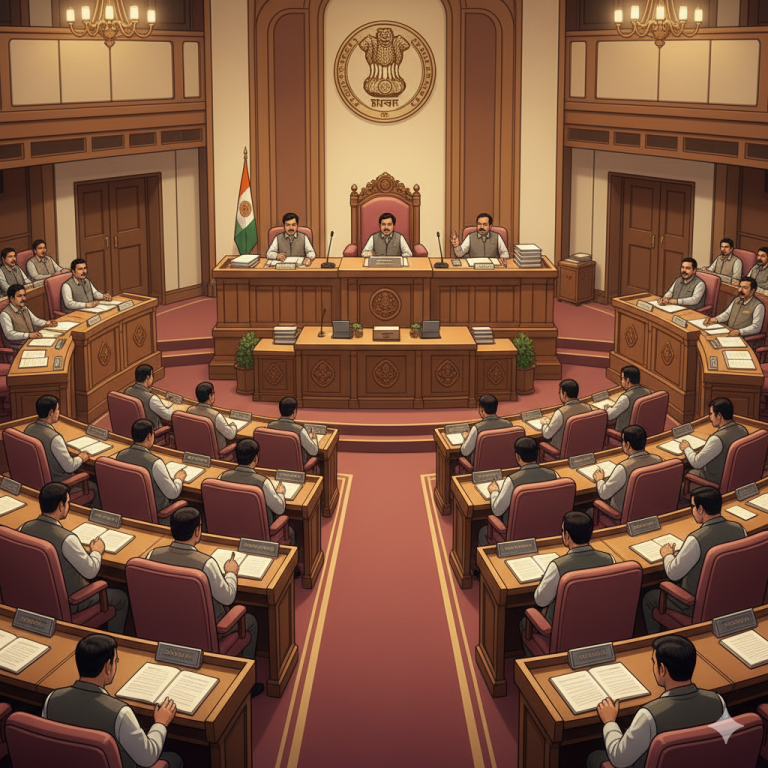Hey, let’s dive into Purnia Bihar, this fascinating spot in eastern India that’s like a doorway to the vast Kosi-Mahananda plains. It’s both a district and a bustling city, shaping everything from border trade to everyday farming life and a mix of cultures in north Bihar. You might see it spelled as Purnea sometimes, and it’s got this rich blend of old stories—from ancient Mithila politics to British-era forts—right alongside today’s realities, like the booming makhana farming scene, expanding colleges, tough weather hits, and its growing spot as a local economic powerhouse. In this detailed, down-to-earth guide, I’ll walk you through Purnia Bihar from all sides: its land and weather, the backstory, how people make a living, social vibes and celebrations, roads and links, how it’s run, the tough stuff, and what’s on the horizon. I’ve pulled ideas from other guides out there, like sections on history, spots to check out, jobs, farming, schools, getting around, floods, admin stuff, and traditions, but I’ve freshened them up into something new and flowing, with bits like Purnea district, Kosi belt, makhana cultivation, rural livelihoods, flood resilience, and Purnia city sprinkled in naturally.
All through this piece, you’ll get real, hands-on info mixed with some bigger-picture thoughts—whether you’re a student digging in, a traveler planning a trip, someone eyeing investments, or just plain interested in Purnia Bihar, I hope this gives you a solid, relatable feel for the place and how it’s evolving right now.
Where Purnia Bihar Sits on the Map — Geography and the Water That Defines It
- Purnia Bihar is tucked up in the northeastern corner of the state, sitting on this flat, fertile plain laced with rivers tumbling down from the Himalayas. You’ve got the Kosi, Mahananda, Suwara Kali, and a bunch of other streams carving through the land, shaping the soil, watering the fields, and yeah, causing those infamous floods. The ground here’s mostly level and rich—think soft, loamy earth that’s perfect for growing rice, maize, and beans—but that comes with strings attached: rivers that like to wander and heavy rains that can flood everything in sight. This ties Purnia right into the bigger “Kosi belt” of North Bihar, a region famous for bumper crops one season and scrambling to rebuild the next. It’s that constant dance with water that makes the place what it is, influencing everything from farming choices to how folks build their homes.
A Short History Made Long by Layers — From Ancient Mithila to Colonial Frontier
The tale of Purnia Bihar goes way back, way before anyone drew lines on a map. It was wrapped up in the old Mithila world, with ties to legendary rulers like Janaka and later the Vajji groups. Jump ahead a few centuries, and it became a key spot during Mughal days, acting as a border area for admin and defense. Then the British rolled in during the 1700s, turning Purnia into a strategic hub with military bases and settler spots like Rambagh. The district got its official shape around then, locking in ways of running things that stuck around even as life changed. You can still spot echoes of all this in crumbling forts, vintage houses, street names, and how the land’s divvied up—it’s like layers of time stacked on top of each other, telling stories if you know where to look.
Purnia City Today — Urban Growth, Population, and Civic Life
The main city in the district has blossomed into one of Bihar’s notable urban spots. With its own municipal setup that’s grown into a real city cluster, Purnia Bihar mixes government offices with a budding service scene: schools, hospitals, and little factories are starting to drive the daily buzz. The markets are alive with everything from old-school wares to fresh consumer stuff, and there’s a constant stream of folks from nearby areas coming in for classes, doctor visits, or deals. For a lot of people around here, Purnia city is that go-to hub for things you can’t get in smaller places or villages—it’s where life picks up pace.
The Land That Feeds the District — Agriculture, Crops, and the Rise of Makhana
Farming is the heart and soul of Purnia Bihar. Rice takes up a ton of the fields, with maize, beans, and oilseeds rotating in to keep things going. But those wetlands and ponds from the Kosi-Mahananda system have turned Purnia into a hotspot for makhana, that foxnut that’s blowing up as a healthy bite and something to ship out. What used to be a side gig in ponds is getting a makeover with better seeds, machines, and pushes for organic methods, helping small farmers link up to bigger buyers. The makhana boom is a big deal because it highlights how an age-old crop, with a bit of help from programs and markets, can really boost earnings in the Kosi plains—it’s like turning water into wealth.
Local Economies Beyond the Field — Industry, Trade, and Services
Sure, farming’s king, but Purnia Bihar’s money-making isn’t all dirt and seeds. Places like the Maranga industrial area and scattered small outfits show how food processing, jute work, and support services huddle near supplies and roads. Buying and selling in bulk is still a core city thing; those markets handle stuff crossing into West Bengal and tie into east-west routes. Schools and health spots offer steady jobs, and there’s this lively informal world—truck drivers, crafters, tiny businesses—that keeps families afloat in towns and bigger villages. Change is coming slow, but you can see it, and it’s crucial because it softens the blow when crops fail or seasons turn rough.
Culture, Language, and Social Fabric — Many Tongues, Shared Rhythms
Purnia Bihar feels like a cultural patchwork. Maithili’s a big player in how people talk and think, but Hindi, Urdu, and Bengali are everywhere too. Throw in Surjapuri and other local twists in different areas, and you’ve got this rich mix that reflects being close to various borders and traditions. It shows up in holidays, stories, and casual chats. Faith-wise, it’s diverse—temples rubbing shoulders with mosques, shrines, and folk spots—coloring the skyline and the year’s events. Local celebrations blend farm cycles with spiritual stuff; fairs and weekly markets keep folks connected and trading. Purnia’s vibe is uniquely Mithila but with this open, mixed energy that makes it feel alive.
Places to Visit — History, Temples, and Lesser-Known Local Sights
If you’re heading to Purnia Bihar, don’t expect flashy landmarks; it’s more about subtle history and cozy spiritual spots. Think temples like Puran Devi or shrines such as Pir Baba that pull in locals for prayers. Scattered forts and old estates near the rivers whisper of past times, and quirky bridges like the wooden “Kaath Pool” have turned into fun local icons. It’s the kind of travel that pays off if you take it slow: wander village paths, try home-cooked meals, peek at makhana ponds in action, and chat with farmers about their world. The draws here aren’t polished for tourists—they’re woven right into everyday history and ways of life.
Education and Knowledge Institutions — Universities, Colleges, and Agricultural Outreach
Schools and learning spots are a big deal for where Purnia Bihar’s headed. The district’s got colleges for degrees, teacher training, and farm advice centers like the Krishi Vigyan Kendra. Purnea University and its linked schools draw kids from all over, sparking a young crowd that boosts needs for rentals, eats, and hangouts. Farm research and outreach are key for things like makhana and rice, with new seeds, workshops, and hands-on demos shifting how folks work the land. This is where dreams meet reality—better learning and skills training will shape Purnia’s coming years, opening doors for folks.
Transport and Connectivity — Roads, Rails, and the City’s Nodal Role
Getting around is what ties Purnia Bihar’s economy and routines together. Big highways and local paths connect to spots like Siliguri, Bhagalpur, and Patna, while trains haul people and farm goods. Solid roads are vital for shipping makhana and fresh stuff, and they make city perks like specialist docs or college classes reachable. Better links cut costs and weave Purnia into wider networks, but side roads still lag, and flood seasons mess things up, making steady access a work in progress.
Floods, Climate Risk, and Resilience — The Double Life of the Rivers
Those rivers in Purnia Bihar are a mixed bag—life-givers one minute, trouble the next. Rain pours mostly in monsoon bursts, and when the Kosi or side streams swell or shift, floods can swamp huge areas fast. Lately, North Bihar’s seen bad ones, uprooting families and ruining harvests in the Kosi belt. Building toughness is ongoing: raising key buildings, better alerts, shoring up banks, and tweaking farm plans around risks. It’s about honoring the rivers’ natural role while safeguarding people and work—that push-pull drives local decisions and daily life for everyone here.
Governance and Administration — District Structure and Local Government
Purnia Bihar runs through a central district office, with blocks and Panchayats handling the details. They deal with emergencies, farm help, health, and schools. Villages manage their own fixes like paths and ponds. How well it works differs by area, and boosts like digital tools, records, and planning can speed things up. It’s the mix of state rules, district action, and village calls that turns ideas—like new power spots, classrooms, or makhana setups—into real stuff for folks.
Health and Social Services — Progress and Persistent Gaps
Health care’s grown in Purnia Bihar with clinics, private docs, and hospitals serving town and country alike. But there’s still shortfalls in experts, quick rides during crises, and steady meds in far-off spots. Social nets like food aid, nutrition pushes, and job programs catch many families, depending on local know-how, awareness, and setup. Beefing up health ties with disaster plans is a top need for the area.
Women, Youth, and Social Change — Pockets of Transformation
Families in Purnia Bihar are seeing quiet shifts. Women are stepping up in groups, processing plants, and makhana chains. Young folks chase schooling and gigs outside farms, with some starting businesses in food or transport, often after picking up skills elsewhere. Change isn’t uniform—lots stay rooted in fields—but more see off-farm work as a path to steadiness. Making that happen needs training, loans, and market ties.
Challenges That Will Define the Next Decade — Infrastructure, Climate, and Inclusive Growth
Purnia Bihar’s got intertwined hurdles ahead. Weather swings threaten fields and builds. Roads and markets need cash to help farmers sell big. Skills gaps in schools and training limit jobs. Admin snags like spotty services slow good ideas. Tackling this means smart spending: tough builds, farm advice, makhana links, and blending risk cuts with growth. How these play out will decide if progress lifts everyone sustainably.
Opportunities and Bright Spots — What’s Working and Why It Matters
But there’s hope in Purnia Bihar too. Makhana’s demand is rising at home and abroad, and with better chains and organics, it could pump up farmer wallets if processing ramps up. Learning and farm help are improving, and the city’s spot as a trade node means outfits in shipping or storage could tap local needs. Smart farming, village flood plans, and power pushes are spots where teams can make real differences. Blending farm strengths with better skills points to balanced growth.
Practical Tips for Visitors and New Residents — How to Experience Purnia Bihar
Heading to Purnia Bihar? Factor in seasons—the rains can flip plans. Hit markets for makhana treats and sweets, check river estates and shrines, and grab local guides for hidden history. Stays are basic but comfy; link with hosts or groups for a real feel. Honor the language mix and customs—a kind word opens doors in small spots.
How Locals Are Adapting — Community Strategies for Resilience
In Purnia Bihar, people get creative: building high homes, timing plants around floods, and teaming up post-disaster. Farmer crews try new makhana types or group processing for better cuts. Town hustlers mix jobs with networks, and youth migrate seasonally or skill up. These tweaks—tech and social—keep things rolling through tough times.
FAQs — Focused on Purnia Bihar
What is Purnia Bihar Known For
Purnia Bihar stands out for its rich plains, rivers like Kosi and Mahananda, and rising makhana farming; it’s also a key market and admin spot in North Bihar.
How Does the Climate Affect Agriculture in Purnia
Purnia’s heavy monsoon rains feed paddy and crops, but flood threats can wreck fields and setups.
What Are the Major Crops of Purnia District
Big ones are paddy, maize, beans, and oilseeds; makhana in ponds is a growing cash earner.
Is Purnia Safe to Visit During Monsoon Season
It’s doable with care; check for floods making roads tough, and keep plans loose.
Where Can I Learn About Makhana Initiatives in Purnia
Farm centers, Krishi Vigyan Kendra, and uni programs run upgrades and organics for growers.
What Languages Are Spoken in Purnia Bihar
Maithili, Hindi, Urdu, Bengali, and dialects like Surjapuri; English in schools and offices.
How is Purnia Governed Administratively
Through district HQ, blocks, and Panchayats handling local services.
Are There Colleges and Universities in Purnia
Yeah—Purnea University, various colleges, and farm training spots.
What Are the Biggest Development Challenges in Purnia
Flood toughness, better roads/markets, crop chains, and stronger education/health.
How is Purnia Adapting to Climate and Economic Change
Folks shift farming, diversify jobs, build makhana networks, and boost local responses to changes.
Final Thoughts — Purnia Bihar Between Continuity and Change
Purnia Bihar’s full of contrasts: lush lands and flood zones, quiet towns and shifting workers, old traditions and new chains. Its path ahead hinges on building on local smarts with investments in links, weather smarts, and markets. If makhana turns into steady cash and schools/infra reach deeper, it’ll be about thriving, not just getting by. For leaders, backers, and locals, the real work is blending know-how with help so those rivers fuel growth, not grief.








